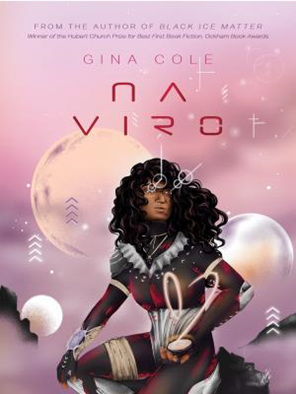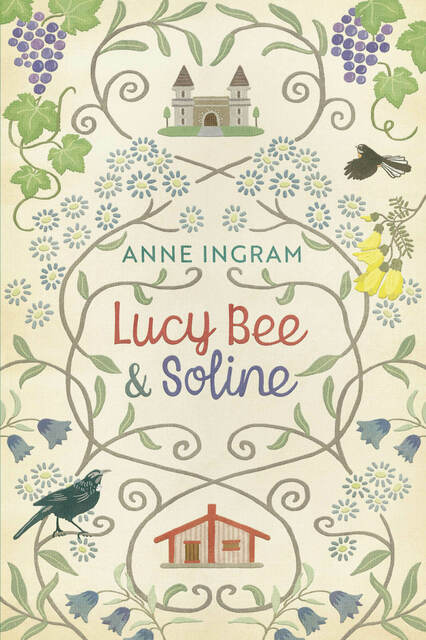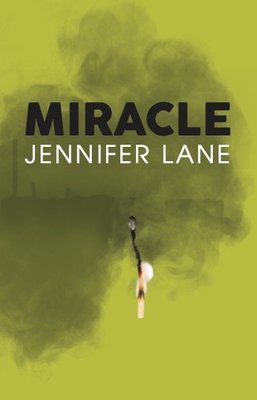Ceridwyn Roberts brings our first batch of YA reviews for 2023, featuring stories full of space travel, mystery, and more.

Na Viro, by Gina Cole
Na Viro by Auckland-based writer Gina Cole (Fijian, Scottish & Welsh) has stunning world-building—rich and interesting and believable as the endpoint for real people and real knowledge. The future of Tāmaki Makarau and the Pacific is well thought through. It’s depressing and yet inspiringly hopeful at the same time. It is wonderful to see a Pasifika sci-fi novel, especially a queer Pasifika sci-fi novel, cover such new ground and new space (pun intended).
The novel tells the story of the volatile Tia Grom-Eddy, who is Fijian and Grom (the term given to long-term Mars residents) and training to be a navigator of Earth’s currents. When she is suspended from the Academy for fighting at her graduation ceremony, she is given the choice to either join the crew of a spaceship on a deep space mission, or to complete a lengthy probationary period on Earth. Mortally afraid of travelling into deep space, Tia chooses probation. Shortly after, however, her beloved sister, Leilani, is lost when a cosmic whirlpool sucks Leilani’s shuttle into its grip. Tia must overcome her fear of space travel and find a way to work with her estranged mother, who is leading the rescue.
It is wonderful to see a Pasifika sci-fi novel, especially a queer Pasifika sci-fi novel, cover such new ground and new space
Na Viro means ‘the whirlpool’ in Fijian, but this whirlpool is one between stars and worlds. It takes us on a journey 200 years post-climate breakdown and ‘Water Wars.’ It’s a world where Pacific Islands are still a place to stand—but the homes are rafts on the seas, tethered to the original island. The overwhelming theme is navigation: of the sea, of the stars, of the future, of familial relationships, and between species and new worlds. My favourite passage holds a merging of science and knowledge that is rare in science fiction:
“Navigational directives automatically appeared in huge letters and diagrams on the exo-patches in the crab-claw sail, but Tia needed no help. She pushed the tiller and turned the drua into the wind, headed into a dilep path, a direct line of currents leading from Aotearoa all the way along Kermadec Trench and on to the Lau Archipeligo. She would draw her home to the drua.”
The bits that really worked for me on a sci-fi level were the evocation of navigation and the tech of this new world. People have prosthetic irises implanted at birth to compensate for the damage radiation would otherwise cause, the main type of spaceship is modelled on a pufferfish, and robots (embods) have useful powers, like living in walls and then becoming embodied as needed. The importance of family and culture echoes throughout the whole book and the love between the main character, Tia and her sister, grandmother, and uncles are beautifully understated and strong.
The overwhelming theme is navigation: of the sea, of the stars, of the future, of familial relationships, and between species and new worlds
I did, however, find that the book covered almost too much ground. It felt rushed—the vacillations of Tia’s thoughts and feelings were sometimes intrusive and could have done with a stronger editing hand. Emotional beats were often glossed over and the relationship with Tia’s parents, while vital to the story, was over-emphasised, but still I never felt I was naturally drawn into her emotions. In the first quarter of the book I didn’t know why Tia was so afraid of deep space—and it’s something I’m also terrified of—so I felt unsatisfied when that element was overcome so quickly and never mentioned again. The evocation of fear, longing, attraction, and love, only to turn to disappointment and betrayal, felt flat on the page.
In an interview I read, the author confessed to being a ‘sci-fi nerd’ and said she wanted Nnedi Okorafor, Octavia Butler, N.K Jemisin, Lani Wendt Young and Sisilia Eteuati in her book club. These influences are redolent—especially Butler, with whom she shares a style of prose that feels epic. Cole also said that “science fiction can be used as a tool to write about identity and culture in the afterlife of colonisation and imperialism in the Pacific.” This is an almost overwhelming goal, and, despite my quibbles, I think this book is going to be a superb example for scholars and a breath of wind in the sails for other writers.

Lucy Bee and Soline, by Anne Ingram
Lucy Bee (aka Lucy Bennett) appears in her third eponymously titled book from Kāpiti resident Anne Ingram. Lucy Bee and Soline is the first book in this self-published series I’ve read and, in what is a major plus for any voracious reader, I didn’t feel at all lost as the novel is easily self-contained.
It’s clear that Ingram is passionate about telling Lucy’s story and providing her readers with a mellow, quiet understanding of the small concerns of teenagehood—small concerns that nevertheless have a huge impact on a young life. This novel deals with the meaning of home and tūrangawaewae, the burden and excitement of history and heritage, the fear of change and the future, and the importance of family.
Lucy Bee and Soline is the first book in this self-published series I’ve read [and] I didn’t feel at all lost as the novel is easily self-contained
15-year-old Lucy and her parents have just welcomed 16-year-old French exchange student, Soline, into their home on the Kāpiti Coast of Aotearoa. Lucy is feeling somewhat adrift as her friends are all deciding on future careers and she is floundering. Soline is far from home and worried about the future of her ancestral chateau back in France, as it looks likely to be sold to repay family debts.
Both teens are interested in history, but from very different perspectives. Ingram uses her journalism background to effect as the kids investigate all manner of small tangents and find information about their different concerns. From the mention of Patricia Grace’s battle with Waka Kōtahi, to an understanding of the Greek Muses, Lucy and Soline join forces with neighbours, parents, books, the Internet, and each other to uncover an old mystery, save the chateau, and decide their future careers.
It’s clear that Ingram is passionate about telling Lucy’s story and providing her readers with a mellow, quiet understanding of the small concerns of teenagehood
Although this is possibly supposed to be YA fiction, it has very much a middle-grade feel, while operating in teen territory and with teen concerns. I found the prose and exposition somewhat clunky, although the parallels between the girls’ experiences, and the way they work through their life and career crises together, were sweet.

Miracle, by Jennifer Lane
Set in the back blocks of NSW in the 1980s, Miracle follows 14-year-old Miracle and her family through various mysteries and violent acts, and the drama of being a teenage girl living amid poverty and depression.
Miracle was born in the middle of Australia’s biggest-ever earthquake (yes, I know, just go with it). At the time of the story, she is fourteen and her world is, very relatably, crumbling. She worries about her agoraphobic mother and supports her angelic, emotionally-scarred brother, Julian. Then her dad gets a job at Compassionate Cremations. This is great for being able to buy food, but the whole town is turning against the business after a spate of sudden deaths. And with Compassionate Cremations and her dad under suspicion, Miracle begins to experience the horrific torment of being in a high school where you are the lowest of the low. Then Oli, the boy she can’t get out of her head, plays a cruel trick on Miracle. This sets off a slow but steady rollercoaster of building stress and tension and results in the vicious beating of a local boy, which is blamed on Miracle’s unfortunate and ineffectual dad. As her dad is arrested, her mum’s addiction resurfaces, and money gets even tighter, Miracle takes the full weight on her shoulders.
As her dad is arrested, her mum’s addiction resurfaces, and money gets even tighter, Miracle takes the full weight on her shoulders
This sounds like a lot for a plot. And it is. But Jennifer Lane’s clear vision and understanding of her characters shine through, making what could have been a soap opera storyline real and affecting. Underneath everything is the love keeping Miracle’s dysfunctional family together and the perils of judging others based on circumstance. The plot twists are great, and, unusually, I didn’t pick them all. I was really gripped by this book—I’m not usually a huge fan of teen fiction without a fantasy element—but I honestly couldn’t put this down and finished it at 2 a.m.


Ceridwyn Roberts
Ceridwyn Roberts grew up surrounded by people who loved science but has spent her entire life consumed by fiction and dying for the stage (figuratively, you understand). Her passion for communication, as a writer, actor, director, and journalist has finally collided with her early influences, and she is now a freelance science communicator. Ceridwyn bounces (mostly) professionally between eclectic topics including climate science, biodiversity, energy, engineering, and economic policy. She has written several unpublished novels that she knows the problems with but has no energy to fix. She is slowly recovering from a proximity-caused over-reliance on the passive tense.



